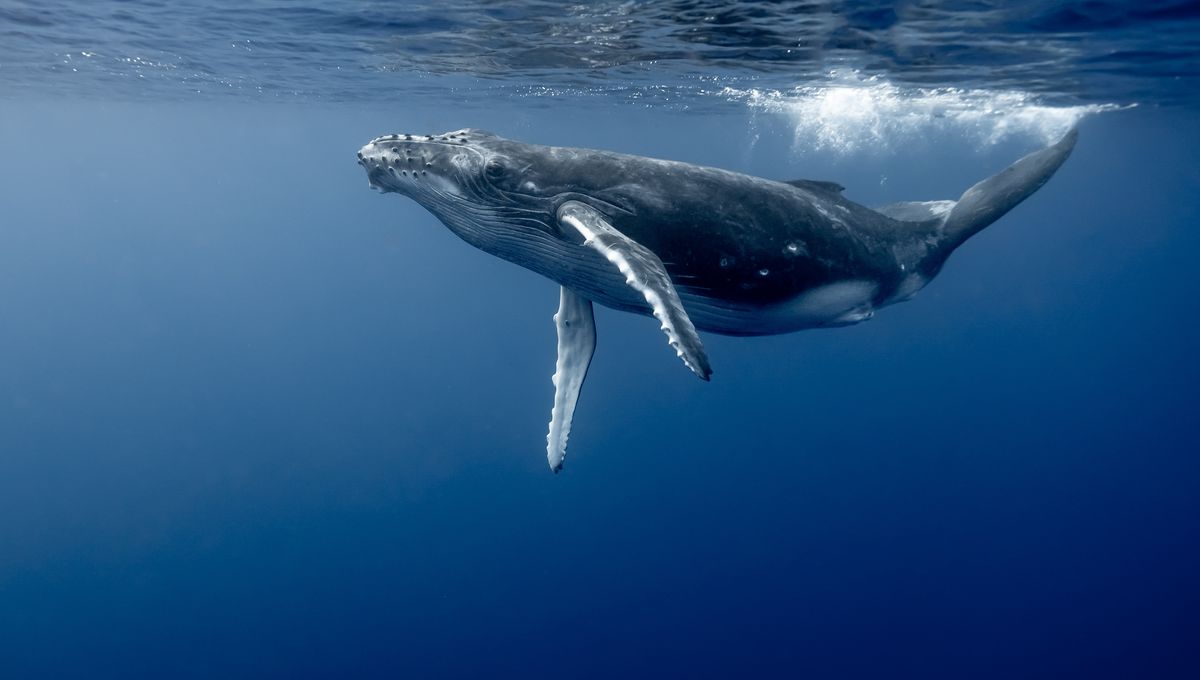
The call of nature for whales is very important to the rest of nature, with their urine allowing life to flourish in areas that would otherwise be liquid deserts. The importance of whale feces has been recognized for a long time, but now a study has demonstrated that migrating whales make an even larger contribution in their urine.
Large areas of the world support little life because they lack one or more vital nutrients. Some of them are lacking in multiple ways, so even if one deficit was addressed, little would change. Others, however, need just one thing. We can see this in deserts that suddenly burst into life when rain comes after years or decades of drought.
Little lives in vast areas of the oceans. Clearly, there is no lack of water or sunlight, and the air above offers carbon dioxide, but the phosphorus and nitrogen that all life needs present a restriction. When whales pass through these areas, they don’t stop to feed on the little life there is, but they leave plenty of excretions behind. This is known as the “whale pump”, bringing vital nutrients from their feeding grounds, which are usually teaming with life, and leaving them in the open ocean to give organisms there a chance.
Although there have been several studies of the whale pump in regard to feces, it is only now that the first quantification of its other aspect has been attempted. The work shows that urine makes a contribution that should not be neglected.
The larger whales can produce up to 950 liters (250 gallons) of urine a day – almost a ton. The water component doesn’t matter, but most of the 4,000 tons of nitrogen that gray, humpback, and right whales bring to nutrient-poor waters each year comes in urine. The photosynthesis that this allows could draw more than 18,000 tons of carbon from the atmosphere. Even these figures are conservative, because they are based only on migrating mothers and calves. The extent to which adult males migrate is still unknown.
This, the authors claim, means “baleen whales provide the largest long-distance nutrient subsidy on the planet.” Data on other whale species, such as blue whales, is scanty, so the authors consider estimates for them to be preliminary.
Nitrogen alone is not enough, but combined with the phosphorus brought by seabirds and fish, it can bring these waters to life.
Even if adding males and other types of whales brought the total quantity of carbon removed to 100,000 tons a year, a single large fossil-fuel power station releases more than this. Whether there are multiplier effects that make whale urine a significant factor to be considered in climate calculations, as is sometimes claimed for the iron they release, remains unknown.
The process needs to repeat endlessly, because some of the life that flowers as a result sinks to the ocean bottom, taking the nutrients with it. Meanwhile, other processes drive the nutrients back to land, most obviously in the form of salmon that end up being consumed on or after their journey to spawn.
Before the mass whaling of the 19th and 20th centuries, baleen whales may have brought three times as many nutrients to the parts of the oceans they pass through in their migrations. What we see as largely barren would once have hosted far more life, and could do so again if all whale populations can recover as well as the humpbacks have.
Remarkably, even the benefits of nutrients that whales leave behind when they die have been the subject of more research than urine. Some whales float after death and are consumed by sharks, orcas, or smaller predators, but others fall. In the deep sea, where nutrients are even scarcer, their bodies form the basis of a food chain that has been extensively studied, despite the challenges involved. Nevertheless, the same study refines this further, and considers even the nutrients carried in whale placentas.
The study is open access in Nature Communications.
Source Link: Why Whale Wee Is Crucial To Healthy Oceans